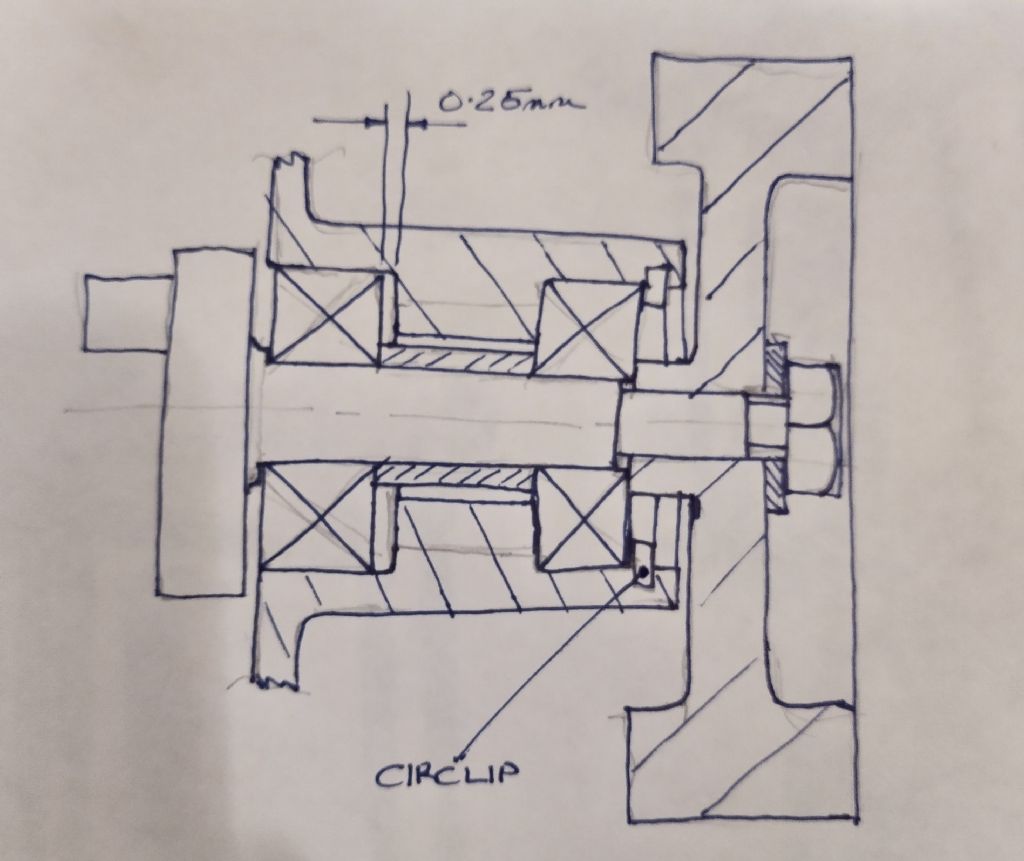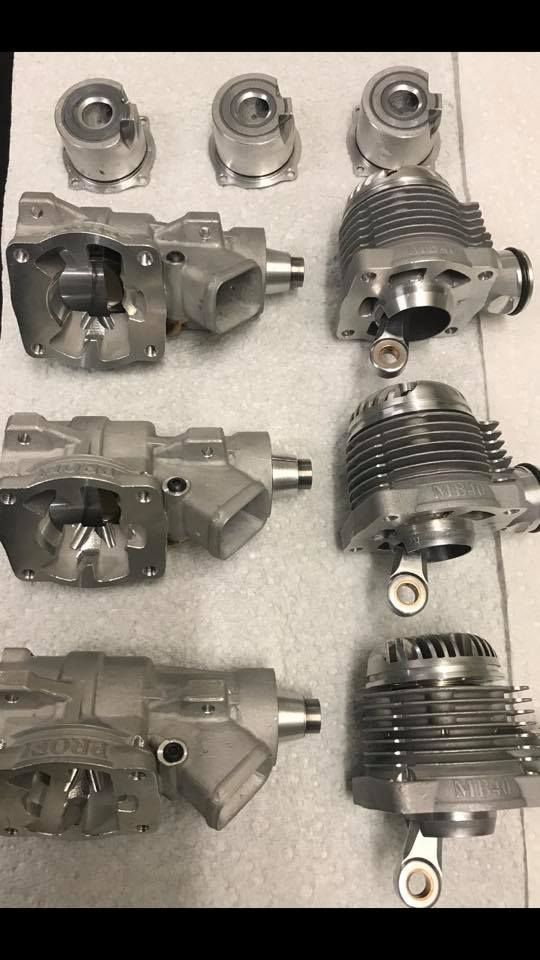I've attached a sketch of how the bearings should be mounted. This is for a rotating shaft, stationary housing. The bearings are clamped to the shaft by the nut on the end of the shaft. the order being nut, washer, flywheel (or prop driver), brg. inner race, spacer, brg. inner race and crankshaft. Note the crank shaft reduces in diameter before the end of the brg. inner race.
Hopefully it will be self evident from the sketch that there is clearance for one of the outer races to move axially, the fit in the housing would be a transition fit. The other bearing is the locating bearing. The outer race is against an abutment formed in the housing and held in position with a circlip. I've suggested a circlip but there are other ways.
Always best to use the bearing manufacturers recommendations for fits.
This arrangement will stop axial loading caused by differential expansion of the various components. Also will greatly reduce the accuracy requirements for the various axial lengths.
Look at any well designed assembly (ball bearings/rotating shaft) and this is how it will be done. If the housing rotated then the mounting would be a little different.
Over constraint of the bearings, as the are with the Nalon Viper, is a common reason for bearing failure, often mistaken for other problems.
The whole business of rolling element bearing mounting is drummed in to students of mechanical engineering, some still get it wrong or choose to ignore these basic principles with the inevitable consequences…..
John

John MC.







